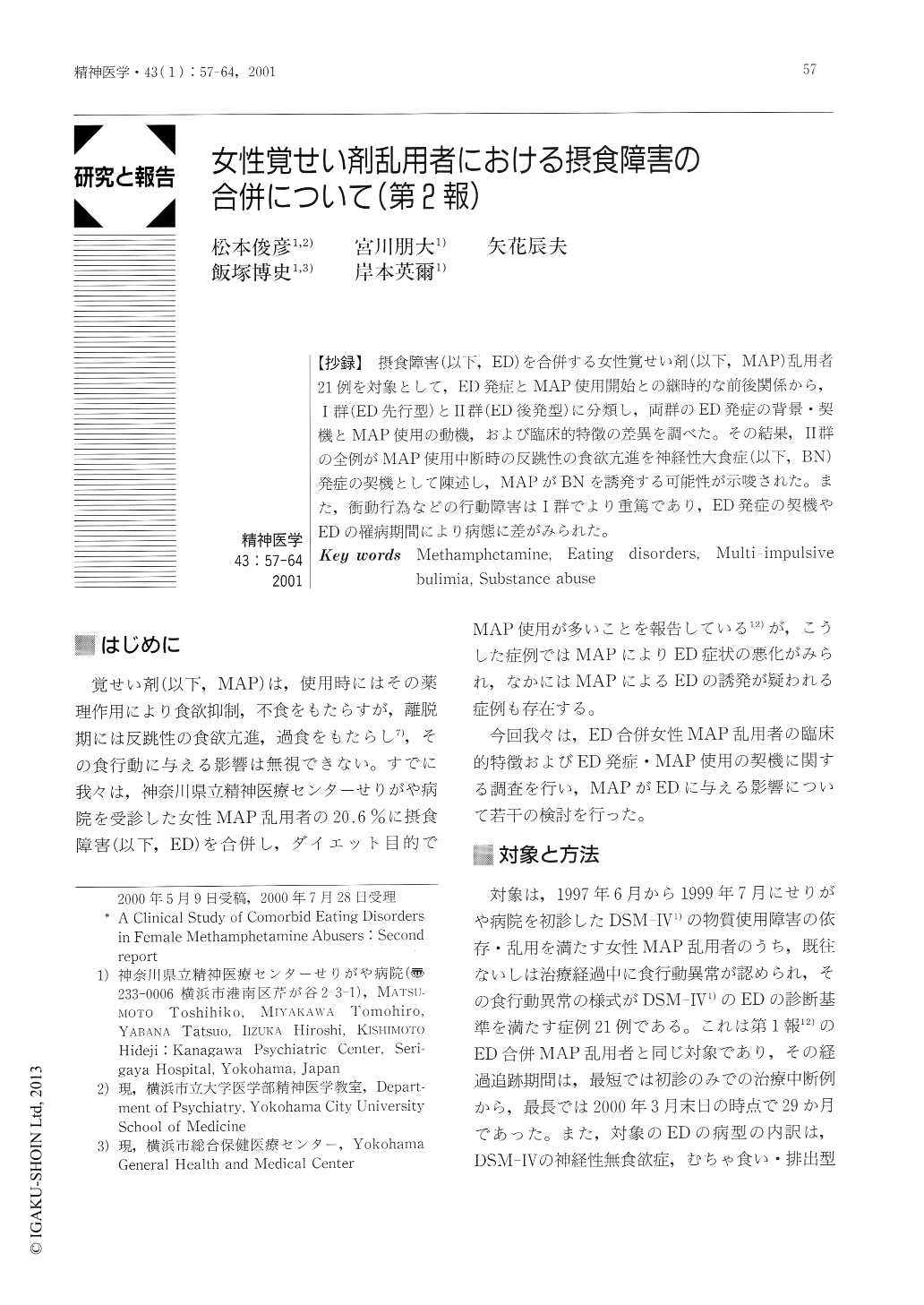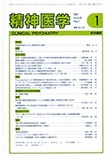Japanese
English
- 有料閲覧
- Abstract 文献概要
- 1ページ目 Look Inside
【抄録】 摂食障害(以下,ED)を合併する女性覚せい剤(以下,MAP)乱用者21例を対象として,ED発症とMAP使用開始との継時的な前後関係から,I群(ED先行型)とII群(ED後発型)に分類し,両群のED発症の背景・契機とMAP使用の動機,および臨床的特徴の差異を調べた。その結果,II群の全例がMAP使用中断時の反跳性の食欲充進を神経性大食症(以下,BN)発症の契機として陳述し,MAPがBNを誘発する可能性が示唆された。また,衝動行為などの行動障害はI群でより重篤であり,ED発症の契機やEDの罹病期間により病態に差がみられた。
The authors studied the clinical features of female methamphetamine (MAP) abusers with eating disorders (ED) in Japan. Of all the female MAP abusers with ED who had had their first consultation at the Kanagawa Psychiatric Center, Serigaya Hospital between June 1997 and July 1999, 21 patients were selected to participate in the study. The diagnoses and subtypes of their ED were a) anorexia nervosa, binge eating and pursing type (4 cases), and b) bulimia nervosa, pursing type (17 cases).
Twenty-one female MAP abusers with ED were classified into group 1 with precedence of ED onset (13 cases) and group 2 with precedence of MAP abuse onset. The clinical characteristics in the two groups were compared.
〉The results were as follows:
1. All the patients of group 2 attributed the cause of ED onset to “rebound overeating,” which often appeared during withdrawal from MAP use.
2. Group 1 showed a higher tendency of multi-impulsive behavior, repeated hospitalization, and a greater diversity of ED symptoms.
〉Based on the results, the authors pointed out the possibility of MAP inducing bulimia nervosa and the importance of the point of view that, to understand multi-impulsive bulimia, not only the influence of substance abuse but also the influence of the comorbidity of personality disorders should he considered.

Copyright © 2001, Igaku-Shoin Ltd. All rights reserved.


